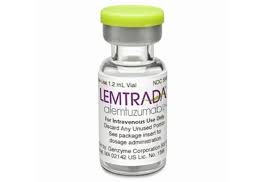A question raised by neurologist Gavin Giovannoni on the Barts-MS blog lit up my radar recently. Dr. G asked whether “elderly” people with MS should be treated differently than those who are younger.
The question arises because a case of progressive multifocal leukoencephalopathy (PML), a serious brain disease, was recently reported in a 76-year-old MS patient. According to the blog, citing Roche Pharmaceuticals, the man has had MS a long time but wasn’t treated with a disease-modifying therapy (DMT), in this case Ocrevus (ocrelizumab), until July 2017. His last dose was last February.
I’m 71. I’m also 18 months past my second round of treatment with Lemtrada (alemtuzumab). So, I suppose I fit the “elderly” definition, and I definitely fit into the category of someone who’s being treated with an aggressive MS treatment that, like Ocrevus, has both high efficacy and potentially serious side effects.
Should older mean less aggressive MS treatment?
In his blog, Dr. G wonders whether someone my age should be prescribed an aggressive MS treatment such as Ocrevus or Lemtrada. “The question you will be asking is why is a 76-year-old MSer being exposed to such a potent immunosuppressive agent…I don’t know. Maybe he had very active MS and his neurologist wanted to offer him a highly effective DMT first-line (flipping the pyramid),” Dr. G. wrote.
Dr. G suggested that older people with MS are more likely to have illnesses in addition to their MS, immune systems that are deteriorating and less biological reserve to deal with serious, life-threatening infections. He concluded, “I would think twice about using such a potent immunosuppressive agent in an elderly person with MS.”
Why I chose to treat my MS with Lemtrada
Were my neurologist and I foolish when, in December 2016, we decided that I would begin Lemtrada treatments at my “elderly” age of 69? I don’t think so, and here’s why:
- I’d been treated with Avonex, Tysabri, and Aubagio. I hit needle fatigue with Avonex. I was treated with Tysabri as long as possible without a serious risk of acquiring PML. Aubagio became unaffordable when I hit 65 and Medicare became my primary insurance.
- I live three hours from my neurologist. Five days of infusions, followed by three days of infusions a year later, with the likelihood of not having to use any DMTs after that — ever — was appealing.
- My risk tolerance is high. When I started Lemtrada treatment at 69, how many more years would I be around? Why not shoot for the moon?
- I trust my neurologist.
Some research supports my aggressive MS treatment decision
Recently, researchers at Brigham and Women’s Hospital in Boston studied a group of 195 people with MS who were 65 or older. The researchers reported that this group had a low rate of adverse reactions to the newer DMTs, and that most side effects were mild, suggesting it’s safe for seniors to use high-efficacy DMTs.
We old folks may be living with several illnesses, as Dr. G noted, and the biological reserve in our brains may be less than that of younger people. But don’t count us out when it comes to prescribing the “big gun” DMTs.
We need more research on older people with MS
According to a 2015 article in the Journal of Neuroscience Nursing, “approximately 90% of people with MS now in their 20s may live into their 70s,” and “approximately a quarter of people with MS are mature adults over 65 years old.”
So, don’t cast us aside. Instead, let’s include people over 50 when pharmaceutical companies design clinical trials for new DMTs and also include us in those trials. Let’s also run more real-world studies of people like me so that older people with MS can have some hard risk-benefit data available when we make our treatment decisions.
(This post first appeared as my column on the MS News Today website).
(Featured image by Gerd Altmann from Pixabay)



